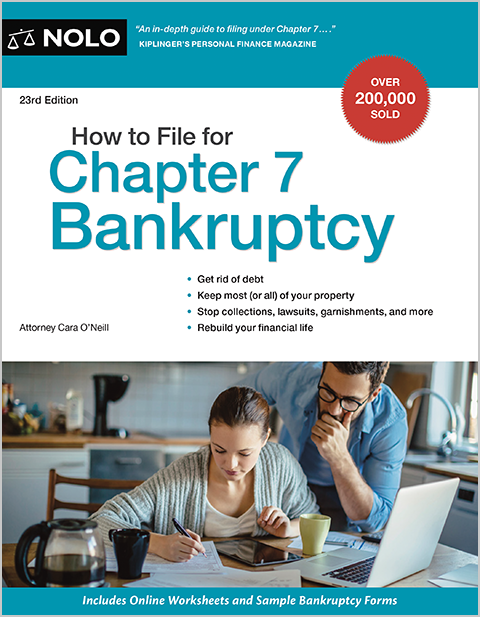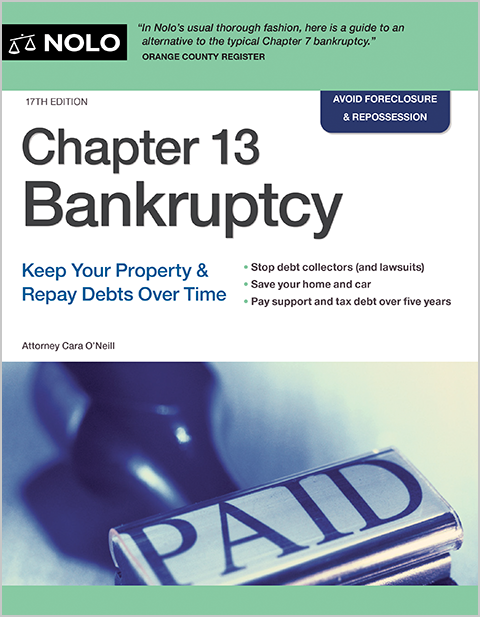Find out if your debt is within bankruptcy-eligible amounts or your obligations exceed Chapter 13 debt limits.
Bankruptcy filers interested in Chapter 13 bankruptcy must know the eligibility debt limits. Because they can only have a certain amount of debt, the Chapter 13 debt limits change periodically. They usually increase every three years, but occasionally increase temporarily in response to economic conditions.
What Are the Current Chapter 13 Debt Limits?
The debt limitations set for cases filed between April 1, 2025, and March 31, 2028, are $1,580,125 of secured debt and $526,700 of unsecured debt. (11 U.S.C. § 109(e) - current amounts are published in the Federal Register and can be found on the U.S. Courts Chapter 13 Bankruptcy Basics webpage).
How Chapter 13 Bankruptcy Helps With Debt Problems
A Chapter 13 bankruptcy allows most filers to pay less each month toward their bills because they're only required to pay their disposable income into a three- to five-year Chapter 13 repayment plan. Balances remaining on qualifying debt, such as credit card balances, utility bills, personal loans, and medical accounts, can be discharged (eliminated) at the end of the repayment plan.
Learn more about debts discharged at the end of a Chapter 13 case. If you're a small business owner, learn about the differences between Chapters 11 and 13.
Strategies to Meet the Chapter 13 Bankruptcy Debt Limits
A filer with debt exceeding the Chapter 13 debt limits must file an individual Chapter 11 case. Most people avoid filing for Chapter 11 bankruptcy when possible because it is far costlier. However, if your debts seem too high, you might still qualify for Chapter 13. Here are a few Chapter 13 qualification strategies.
Determine Which Debts Don't Count Toward the Debt Limit
You must list contingent and unliquidated debts in your petition, but they don't count toward the debt limits. An obligation falling into one of these categories won't apply.
Contingent debts. You don't have to pay these debts unless a "contingency" event occurs. These are often personal guarantees that aren't due unless someone else defaults, usually a business. The debt doesn't count toward the debt limits if the contingency event hasn't occurred.
You might think that cosigned debts are contingent. For example, you agree to cosign on your brother's car loan with the understanding that he'll pay the debt. But that's usually not the case. Even if you agree with the other person that you won't have to repay the debt, you're equally responsible from a legal standpoint.
Unliquidated debts. Your responsibility to pay hasn't yet been determined, or the amount can't be readily determined. This category often includes accident and other personal injury claims when the case or claim is ongoing and the injury hasn't yet been resolved.
Breach of contract claims usually don't qualify as unliquidated because the amount owed is often easily calculated.
Divide Debts into Secured and Unsecured Portions
Sometimes, you can remove a lien or part of a lien from secured property in bankruptcy using "lien stripping" and "cramdown." The removed lien is converted to unsecured debt. This strategy allows you to increase your unsecured debt amount while decreasing your secured debt.
Consider Chapter 20 Bankruptcy
Chapter 20 bankruptcy is a two-step strategy to deal with your debts in bankruptcy. It can help if you need a Chapter 13 to catch up on back payments so you can keep your home or car, or pay off debts that you can't get rid of in Chapter 7, but your debts are too high to qualify.
Instead of filing Chapter 13 immediately, you first wipe out debt in Chapter 7, thereby lowering your total debt amount. Here's how Chapter 20 bankruptcy works:
First, you must pass the Chapter 7 means test and meet other eligibility criteria for Chapter 7. Then, in Chapter 7, you wipe out unsecured debts eligible for discharge and reduce your unsecured debt load.
If you still have debt remaining that you couldn't discharge in Chapter 7, you can consider filing for Chapter 13. You'll pay off your nondischargeable debt, like support arrearages or past-due tax debt, over the length of your Chapter 13 repayment plan.
Remember that you won't get a discharge at the end of your Chapter 13 case (or need one) because you will have received one for all your dischargeable debt in the Chapter 7 case. Also, a Chapter 20 strategy doesn't work well to catch up on secured debt, such as a mortgage or car payment, because filers typically lose homes and cars in Chapter 7 when they file while behind on payments. However, you might be able to cram down or strip off liens. Learn about lien stripping in Chapter 13.
Not all bankruptcy courts allow Chapter 20 filings. Check with an experienced bankruptcy attorney in your area.
Chapter 13 Strategies for Married Debtors
Married couples who need to file for bankruptcy can use additional strategies if their debts exceed the Chapter 13 debt limits.
Spouses Can File Under Different Chapters
If one spouse's debt exceeds the limit for a joint filing, you might get around the debt limits by having one spouse file for Chapter 7 bankruptcy and the other for Chapter 13 bankruptcy. Here's how it might work:
Example: Carlos and Evelyn fell behind on their mortgage and want to use Chapter 13 to bring it current. However, Evelyn has unsecured debt from a failed business that puts them over the debt limit. Carlos is not obligated for Evelyn's business debt, but has a business to protect. Evelyn files Chapter 7, and Carlos files Chapter 13. Evelyn's business debt is discharged in her Chapter 7, and the mortgage is brought current through Carlos' Chapter 13 repayment plan.
This requires a sophisticated legal analysis if:
- you have assets that are not protected by exemptions
- you live in a community property state
- you are claiming ownership of property as tenants by the entirety, or
- you are planning to use lien stripping or cramdown.
Check with an experienced bankruptcy attorney in your area to ensure you are fully aware of any consequences and explore other strategies for dealing with Chapter 13 debt limits.
Need More Bankruptcy Help?
Did you know Nolo has made the law accessible for over fifty years? It's true, and we wholeheartedly encourage research and learning. You can find many more helpful bankruptcy articles on Nolo's bankruptcy homepage. Information needed to complete the official downloadable bankruptcy forms is on the Department of Justice U.S. Trustee Program website.
However, online articles and resources can't address all bankruptcy issues and aren't written with the facts of your particular case in mind. The best way to protect your assets in bankruptcy is by hiring a local bankruptcy lawyer.
|
|

